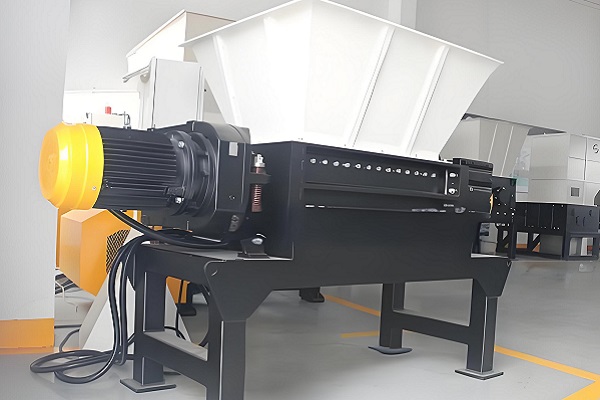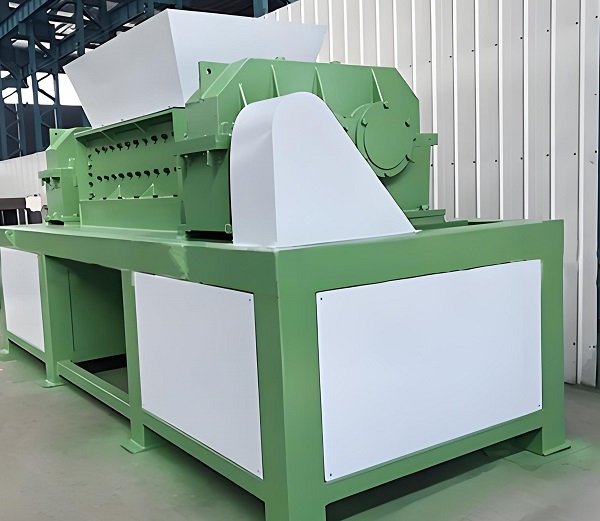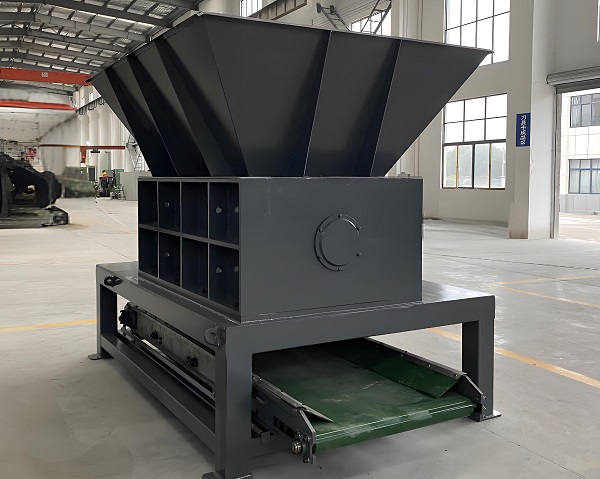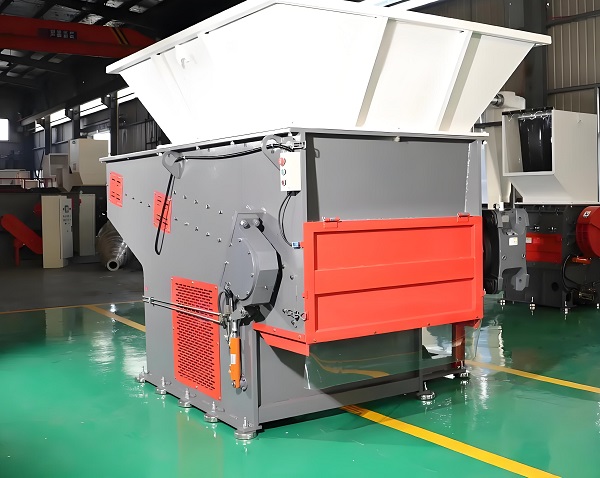This article focuses on shredders, which are experiencing growth opportunities driven by environmental protection and resource recycling needs. The latest technologies include intelligent control (such as PLC systems that reduce energy consumption), energy conservation and environmental protection (low noise and low energy consumption), breakthroughs in specialized material handling, increased production capacity, and customized services. Future development will focus on intelligent upgrades, stricter environmental protection, multifunctional integration, refined customization, and global market expansion, contributing to sustainable development.
Against the backdrop of rising environmental awareness and growing demand for resource recycling across various industries, the shredder market is booming. Driven by tightening global environmental policies and the rise of the circular economy, shredders, as core equipment for solid waste treatment, are experiencing historic development opportunities. The shredder industry is also undergoing continuous technological innovation to meet market demand for efficient, environmentally friendly, and intelligent waste treatment.
The latest technology of shredders

1. In-depth Application of Intelligent Control Technology
The development of intelligent technology has brought new opportunities for improving shredder performance. Currently, some advanced shredders feature intelligent control systems that automatically adjust shredder operating parameters based on material properties and feed rate, improving shredding efficiency and quality. For example, intelligent shredders can monitor material hardness and moisture in real time, automatically adjusting blade speed and torque for efficient and stable operation. Xinbei Machinery's intelligent dual-shaft shredder, equipped with a PLC automatic control system, can adjust blade speed and torque, enabling "multiple shredding operations per machine" for different waste types, such as film, hard plastics, and composite materials. This reduces energy consumption by 30%, resulting in intelligent, high-yield, and efficient operation. This equipment, equipped with independently developed and manufactured new-generation cutting tools, boasts a lifespan more than doubled, eliminating the frequent downtime associated with traditional equipment due to metal contamination.
2. Advances in Energy-Saving and Environmentally Friendly Technologies
As environmental awareness grows, energy-saving and environmentally friendly technologies have become a key development direction for shredder technology. New shredders utilize energy-saving motors and optimized transmission systems, reducing energy consumption. Furthermore, improvements to blade design and material enhance the shredder's wear resistance, reducing maintenance costs. Some equipment is also equipped with exhaust gas treatment systems to eliminate harmful gases during the shredding process. For example, a new shredder developed by one company utilizes a novel shredding mode, achieving an operating noise level of less than 70 decibels, making it suitable for use in residential communities and industrial parks. Furthermore, the density of shredded materials increases by three times, reducing waste removal costs by 40%. Other equipment utilizes an "electrically driven melting + waste heat self-circulation" system, reducing overall energy consumption by 35% compared to traditional hydraulic models. The use of bio-based lubricants ensures zero VOC emissions throughout the entire production process.

3. Technological Breakthroughs for Special Materials
Shredders have also achieved specific technological breakthroughs for special materials such as textile waste, battery casings, and photovoltaic backsheets. Over 26 million tons of textile waste (waste textiles) are produced annually, once considered "municipal waste" due to processing difficulties. Now, a new generation of anti-entanglement shredders utilizes dual-shaft shredding technology, single-shaft fine shredding technology, and a modular blade assembly structure to achieve "entanglement-free and stable operation." The power system drives the blade shafts to rotate at low speeds, tearing and shearing the fibers against each other, quickly shredding long fibers into short fragments, eliminating entanglement at the root and ensuring continuous operation. The blades are quickly removable and replaceable, with customized blade shapes for different waste compositions, such as pure cotton, chemical fibers, and blends. This balances processing efficiency and equipment lifespan, reducing maintenance costs and downtime risks. For new energy solid waste processing, intelligent shredders are designed specifically for battery casings, photovoltaic backsheets, and other waste materials. They utilize explosion-proof motors and inert gas protection systems to eliminate the risk of explosion during processing. They also automatically identify and separate metal inserts, achieving an impurity removal rate of ≥99.5%.
4. Capacity Increase and Customized Services
Some companies have achieved significant breakthroughs in production capacity by comprehensively overhauling their shredders through the introduction of advanced technologies. Shouyu Machinery has innovated its aluminum shredders by incorporating cutting-edge concepts and processes from Italy. The shape and arrangement of its blade teeth are meticulously calculated to maximize contact area with the aluminum material, reducing cutting forces while significantly increasing the amount of shredding per unit time. According to actual tests, the new equipment has increased its hourly aluminum processing capacity by 30%. The company also provides customized services tailored to the diverse aluminum shredding scenarios and production capacity requirements of different companies. While meeting environmental requirements, it has achieved an increase in the comprehensive utilization rate of solid waste in the aluminum industry from 40% to 85%.

Development Trends
1. Continuous Intelligent Upgrades
In the future, shredders will become even more intelligent. In addition to automatically adjusting operating parameters, they will also integrate IoT monitoring and AI algorithms to enable real-time adjustments to parameters such as blade speed and jet frequency, achieving "self-sensing, self-optimizing" intelligent operation and maintenance. The equipment can monitor its operating status in real time, providing early warning of faults, enabling maintenance personnel to address them promptly and reducing downtime. They can also automatically optimize production processes based on production needs and equipment operating conditions, improving overall production efficiency.
2. Increasingly Stringent Environmental Requirements
With increasingly stringent global environmental regulations, shredders must comply with environmental requirements during both production and use, reducing energy consumption and pollutant emissions. Future shredders will continue to improve in areas such as noise reduction, dust reduction, and optimized exhaust gas treatment. They will also prioritize resource recycling efficiency, using technological innovation to increase material recovery and reuse rates and reduce the amount of waste destined for landfill or incineration.

3. Multifunctional Integration
To meet the diverse needs of different users, shredders will continue to develop towards multifunctional integration. Future shredders will not only perform shredding but may also integrate screening, separation, cleaning, and drying functions, achieving one-stop material processing. For example, when processing waste plastics, the equipment can clean and screen plastics directly after shredding, separating different plastic materials. This improves production efficiency and reduces production costs and equipment footprint.
4. Refinement and Customization
As the market develops, users will demand increasingly refined material processing capabilities from shredders. When processing scrap metal, they will be able to more precisely separate different metal types, thereby increasing recovery rates. Shredder manufacturers will provide more personalized services for users in different industries, with varying material characteristics, and at varying production scales. From equipment selection and configuration to overall solutions, everything will be tailored to meet specific needs.

5. Global Market Expansion
With the advancement of global economic integration and the increasing emphasis on environmental protection and resource recycling in various countries, the shredder market will exhibit a global development trend. Companies with technological advantages and brand influence will actively expand into the international market and participate in international competition. By establishing overseas production bases, sales networks, and after-sales service centers, they can better meet international market demand and promote the exchange and advancement of shredder technology worldwide.
The shredder industry is undergoing a period of rapid development and transformation. Continuous technological innovation will enable it to play a more important role in environmental protection, resource recycling, and other areas, contributing to the achievement of sustainable development goals.
Save Time! Get A Detailed Quotation Quickly.
